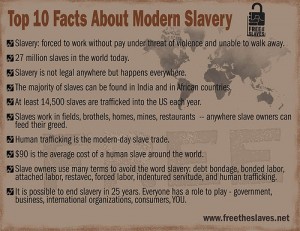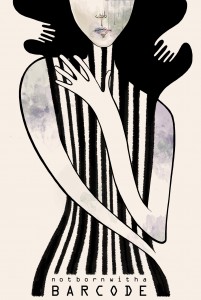I had the opportunity to attend Anthony Talbott’s lecture on Monday night. His efforts to stop human trafficking in Ohio are inspiring. Talbott focused on raising awareness among citizens; it is through education that citizens are able to take the first step towards eradicating human trafficking. Further, he stressed that human trafficking is modern day slavery; victims may not be physically chained, but they are bound to traffickers who take away their identification and legal documents.
Talbott provided startling statistics about modern day human trafficking: about 27 million slaves exist in the world today, 200 thousand of which are enslaved in the US. Despite these mind-blowing facts, there have been very few convictions of traffickers and a dismal amount of victims recovered.
Anthony Talbott, as a resident of Ohio, focuses on human trafficking within the state. The main reasons Ohio is such a large hub for human trafficking activity is attributed to the following: extensive and well developed highway systems, large population of minority groups, close proximity to major metropolitan cities, and the large amount of strip clubs (where many illegal activities occur, including trafficking).
It is the responsibility and of all global citizens to raise awareness about the global pandemic that is human trafficking. Though the facts are frightening, it is necessary to educate our peers. The first step to eradicating human trafficking is to raise awareness of the issue at hand. From there, educated constituents can lobby their Congressional representatives to introduce and pass legislation creating programs for victims of human trafficking, programs to investigate or identify key areas of human trafficking, or educational programs about the signs of human trafficking. Further, individuals can take action by being aware consumers—avoid purchasing cheap clothing made in foreign countries, buy second hand, and buy fair trade. The point: try to reduce you inadvertent support of forced labor.
I had the opportunity to attend Anthony Talbott’s lecture on Monday night. His efforts to stop human trafficking in Ohio are inspiring. Talbott focused on raising awareness among citizens; it is through education that citizens are able to take the first step towards eradicating human trafficking. Further, he stressed that human trafficking is modern day slavery; victims may not be physically chained, but they are bound to traffickers who take away their identification and legal documents.
Talbott provided startling statistics about modern day human trafficking: about 27 million slaves exist in the world today, 200 thousand of which are enslaved in the US. Despite these mind-blowing facts, there have been very few convictions of traffickers and a dismal amount of victims recovered.
Anthony Talbott, as a resident of Ohio, focuses on human trafficking within the state. The main reasons Ohio is such a large hub for human trafficking activity is attributed to the following: extensive and well developed highway systems, large population of minority groups, close proximity to major metropolitan cities, and the large amount of strip clubs (where many illegal activities occur, including trafficking).
It is the responsibility and of all global citizens to raise awareness about the global pandemic that is human trafficking. Though the facts are frightening, it is necessary to educate our peers. The first step to eradicating human trafficking is to raise awareness of the issue at hand. From there, educated constituents can lobby their Congressional representatives to introduce and pass legislation creating programs for victims of human trafficking, programs to investigate or identify key areas of human trafficking, or educational programs about the signs of human trafficking. Further, individuals can take action by being aware consumers—avoid purchasing cheap clothing made in foreign countries, buy second hand, and buy fair trade. The point: try to reduce you inadvertent support of forced labor.
Overall, I am very happy that I had the opportunity to attend such a fun and informative talk. The information I’ve garnered from the joint FYS classes and Anthony Talbott’s lecture has made me more aware of the issue that is human trafficking. Hopefully, over time and with the education of citizens, the threat of (and demand for) human trafficking will decrease.
Overall, I am very happy that I had the opportunity to attend such a fun and informative talk. The information I’ve garnered from the joint FYS classes and Anthony Talbott’s lecture has made me more aware of the issue that is human trafficking. Hopefully, over time and with the education of citizens, the threat of (and demand for) human trafficking will decrease.

